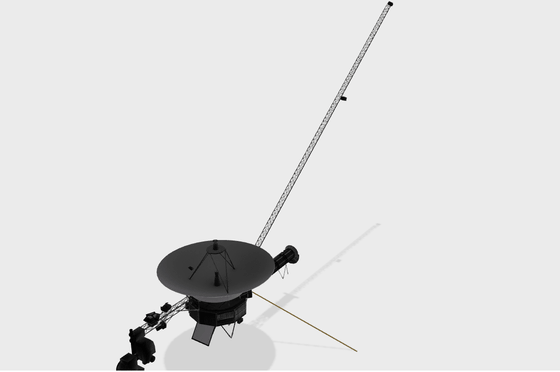Communication with Voyager 1, more than 24 billion km away, was lost, but was restored using a secondary communication system that had not been used for 40 years.

After Pause, NASA's Voyager 1 Communicating With Mission Team – Voyager
https://blogs.nasa.gov/voyager/2024/10/28/after-pause-nasas-voyager-1-communicating-with-mission-team/

Voyager 1 is managed by a team at the Jet Propulsion Laboratory (JPL), which is involved in the research, development and operation of NASA's unmanned spacecraft, via the Deep Space Network . Because Voyager 1 is located about 24 billion km from Earth, it takes about 23 hours for the JPL team to send a command, and another 23 hours for Voyager 1 to receive the command, transmit the engineering data, and then return the data to Earth.
Below is a 3D model of Voyager that can be moved and viewed from all angles on NASA's official Voyager page .

On October 16, 2024, the JPL team sent a command to turn on one of Voyager 1's heaters. As a result, the heater command triggered a fault protection system, even though Voyager 1 should have had enough power. Because it takes about two days from sending a command to receiving data, the JPL team only became aware of the problem when the Deep Space Network could not detect a signal from Voyager 1 on October 18.
Then, on October 19, communications from Voyager 1 appeared to stop altogether. The JPL team speculated that Voyager 1's fault protection system was activated two more times, causing it to turn off its X-band transmission system for communicating with Earth and switch instead to a lower-power secondary transmitter called S-band, which has a weaker signal than X-band and hasn't been used for communications since 1981.
As a result, by accessing the secondary transmitter, which hadn't been used for over 40 years, engineers were able to find an S-band signal from Voyager 1. Although they could have switched back to X-band on command, the reason Voyager 1's fault protection system had triggered the switch to S-band had not been determined as of October 22. So rather than risk another fault protection system activation, the JPL team sent a command to the S-band transmitter to restore communication with Voyager 1.
Voyager 1 has had communication problems in the past. For about five months since November 2023, Voyager 1 continued to send indecipherable data to Earth. The indecipherable data was mainly measurements and data reporting the operation status of the probe, which made it unclear what the current status of Voyager 1 was. Eventually, NASA discovered that there was a problem with one of the 'Flight Data Subsystems (FDS)' that package Voyager 1's observation data and operation status.
Voyager 1, which had been sending indecipherable data, has sent a decipherable signal to Earth for the first time in five months, making it possible to check the current operating status - GIGAZINE

In response to the incident, NASA said, 'Voyager 1 and Voyager 2 have been flying for more than 47 years and are the only two spacecraft operating in interstellar space. As these spacecraft age, technical issues are becoming more frequent and complex, presenting new challenges for the mission engineering team. Voyager 1 has one of its two radio transmitters turned off, and teams are currently working to determine the cause of the issue.'
Related Posts:
in Science, Posted by log1e_dh






